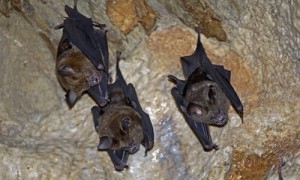嫦娥三号月球探测器自3013年登陆月球以来,一直还在正常运行。国防科工局表示嫦娥三号是工作时间最长的月球探测器。两年半以来,嫦娥三号收集了许多信息和图片帮助解决许多重要科学问题。
The lunar probe Chang'e-3 landed on the moon in December 2013, and is still working. The State Administration of Science, Technology and Industry for National Defense says it's the longest work time ever for a lunar probe. For two-and-a-half years, Chang'e 3 has collected a great amount of data and images, helping answer many important scientific questions.
New research findings in the human lunar exploration endeavor, made possible with high-tech devices on the Chang'e lander: a camera, an optical telescope, and an extreme ultraviolet imager, exploring the moon, the universe, and the plasmasphere around the earth.
First finding: the world's first lunar geological map made with radar.
The map shows the structure 330 meters under the lunar surface, and reveals a new rock - lunar basalt.
"The radar detected three layers of basalt under the ground, especially that the top layer was 195 meters deep," Lin Yangting, researcher with Institute of Geology & Geophysics, said.
The survey found the lunar soil is five meters deep, almost double what other countries had found.
In observing the universe, the Chang'e-3 for the first time used an optical telescope. The lack of an atmosphere on the moon makes it ideal for viewing.
And the telescope helped prove that there is no water on the moon.
"We measured the content of water on the lunar surface and above, and got the historically smaller value, which is also in line with the expectations of the experts on the formation of the moon," Weu Jianyan, researcher with National Astronomical Observatory, said.
The Chang'e-3 lander uses the world's first extreme ultraviolet imager, to get images of the plasmasphere.
The plasmasphere is about 40,000 kilometers from the earth's surface. It can block solar wind and most of the cosmic rays, to protect the earth.
"The earth's plasmasphere is in the innermost of the earth's magnetosphere. If the magnetosphere has interference, the shape, position and structure of the plasmasphere will be affected. Therefore by detecting the structure and evolution of the earth's plasmasphere, we can monitor the influence of the solar activities to the earth," He Nan, associate researcher with National Astronomical Observatory, said.
The Chang'e-3 made China's first successful soft-landing on the surface of an extraterrestrial body.
Since the 1990s, China has had four missions to the moon, only second to the United States which has had five. China's research findings are recognized by global counterparts.







